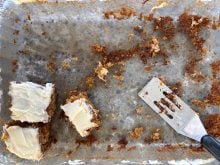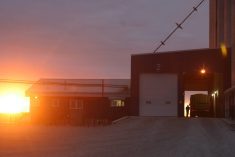BRUNO, Sask. – From his office window at the Bruno Ursuline campus,
Bruce Hobin can’t see much of the “country estate” he is managing.
He inherited the management of 60,000 square feet of buildings and 65
acres of land when the University of Saskatchewan agreed to lease it
for $1 a year from the Ursuline nuns who moved out in 1999. The
university turned it over to the extension division and Hobin got the
part-time job of director of marketing for the facility located 90
Read Also

Producer profits remain under significant pressure
Manitoba farmers are facing down a double hit of high input costs, like fertilizer, and low grain prices as they harvest their next crop.
kilometres east of Saskatoon.
While Hobin’s window has a less than dramatic view overlooking the main
entrance staircase and the parking lot, he has many visions of what to
do with the 83-year-old former convent and girls’ school.
“The university uses it for a residential education centre. Plus, we
make it available to other organizations, non-profit groups and unions
for meetings, conferences and retreats.
“Across North America we’re seeing a renaissance of residential
campuses. It’s relaxing away from the hustle and bustle.”
Hobin said the Bruno site could become a model of rural revitalization
that focuses on education and the arts, rather than industry or
agricultural diversification.
One of the facility’s biggest customers is an umbrella group called
Dance Saskatchewan, which offers a summer training workshop.
Last year it had a choreographer from Los Angeles who attracted dance
students to Bruno from Vancouver and Calgary, as well as Saskatchewan.
The university built a special sprung floor for the dance school for
this summer.
Others who have used the residence, meeting rooms and dining hall are
woodworkers, quilters and potters’ groups. The Bruno campus also has
snagged a provincial grant to hire a resident artist for a year who
will spend half the time on personal projects and half on working with
the community to develop visual arts. The ad is running and the staff
would like to see the artist here by March.
Hobin has become the facility’s salesperson. His job has a deadline
attached that will determine the campus’ fate. The university wants the
facility to be paying for itself by June 2004. Most of the
$225,000-$250,000 a year cost of running the campus is for the people
who set up the programs, staff the kitchens and do the cleaning and
maintenance.
“Break even would be the ideal world,” Hobin said. “We’re nowhere near
that, but we’re moving in the right direction.”
He acknowledges the campus’s dilemma of being an hour from the city and
offering modest accommodation. Enticing groups to a rural location can
be challenging despite its reasonable prices. And people get used to
certain standards in their rented rooms that don’t include sharing with
others or walking in “a museum of linoleum.”
But Hobin said once people come, they are pleasantly surprised and
Bruno often gets repeat business.
Although the university runs the Bruno campus, it does not teach credit
courses there, to avoid competition with those offered at St. Peter’s
Abbey in Muenster a half hour farther east. But Hobin is hoping to
encourage his academic colleagues to use the Bruno facility. One
possibility is for research plots and he thinks there might be a cherry
growing test done on its land shortly.
The extension division offers several classes here, notably in
horticulture, and the local arts council is staging four events this
winter from its gymnasium.
But Bruno doesn’t rely on people from afar. It is also planning a lot
of business when the Saskatchewan Winter Games are held nearby in
February. Local people also know where to hold their family reunions.
“I think everyone in Saskatchewan must come from Bruno,” said Hobin
with a laugh, noting that up to 600 people are expected at one reunion
this summer that will use the Bruno campus.
Local agrologists are planning a two-day market outlook conference here
in March and Hobin is working to create a local ag society. He knows
the town of 700 supports the Bruno campus because it offers jobs. The
mayor is the facility manager.
Also, the university staff and visitors “frequent the restaurants and
the local pub.” The bowling alley that is normally closed in the summer
opened for a special night during the dance school. Hobin said the
townspeople know this sort of rural development takes time.
“It’s always easy to come up with ideas. It’s difficult to enact. You
need funding, then go for community approval. You have to start small
and go to a grander vision.”
If the cherry plot is planted, he hopes to develop a cherry festival to
go with it that has cultural as well as agricultural tones. And he is
dabbling with a murder mystery weekend this fall.
“The whole campus is wired for sound so you could have a blood-curdling
scream everywhere.”
Visitors have to look hard to find traces of the facility’s religious
past. Hobin said wryly that one group thinking of coming to a retreat
here cancelled because it just didn’t seem Catholic enough any more.
There is a cross and large arched windows in the old chapel that light
up the present meeting room, and a similar lofty ceiling is in the new
bookstore, the former library.
But the most visual reference to the campus past is the stone cross and
statue of St. Ursula on the top of the 1919 building. Hobin said he
must be on the right track since Ursula is the patron saint of
universities.
















